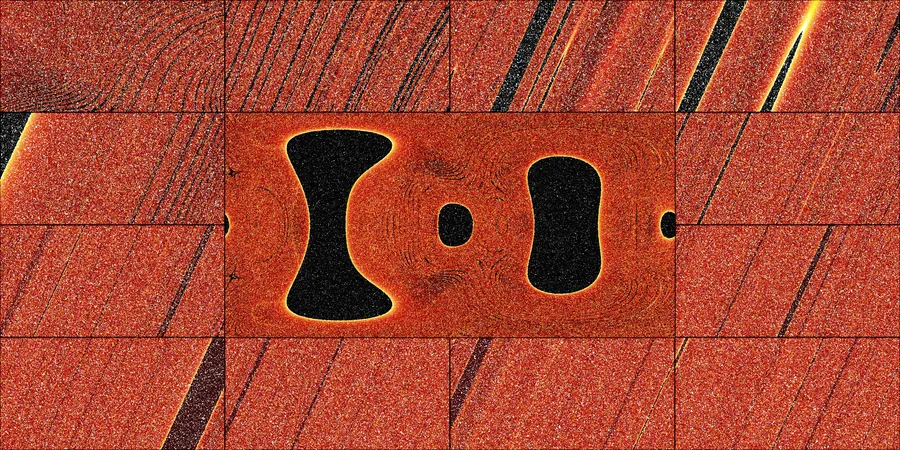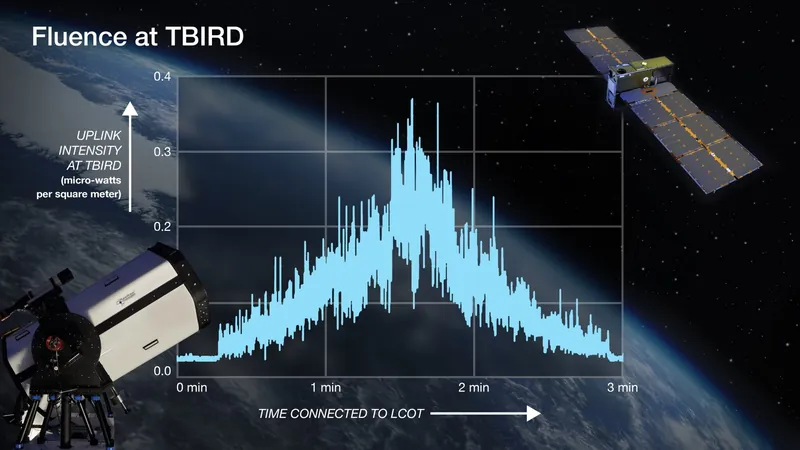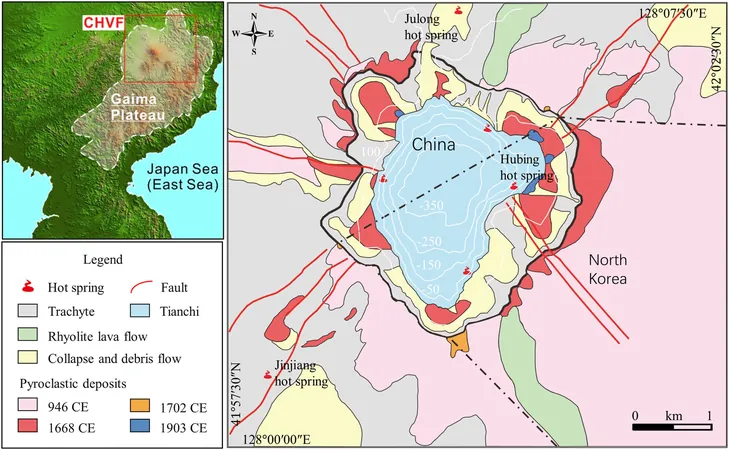
Groundbreaking Discovery Unveils Order in the Chaotic Universe: 'Islands' of Regularity in the Three-Body Problem!
2024-10-10
Author: Michael
Introduction
In an exciting revelation from the realm of astrophysics, a researcher from the University of Copenhagen has overturned the long-held belief that interactions among three massive celestial bodies are purely chaotic. Instead, this new study has identified 'islands of regularity'—predictable patterns where typically one of the objects is expelled from the system during these encounters. This pivotal finding may significantly enhance our understanding of gravitational waves and other cosmic phenomena.
The Three-Body Problem
The so-called Three-Body Problem has intrigued scientists since Sir Isaac Newton first articulated the gravitational interactions of celestial bodies. While the gravitational pull and motion between two objects can be predictably calculated, introducing a third object complicates matters dramatically, leading to chaotic behavior. This chaotic dynamic is what has defined the Three-Body Problem as one of the most famous unsolvable puzzles in both mathematics and theoretical physics.
Insights from the Research
Alessandro Alberto Trani, the lead researcher from the Niels Bohr Institute, explained, 'Traditionally, the Three-Body Problem suggests that interactions evolve chaotically, lacking any regularity or predictability. However, our extensive simulations reveal that there are indeed areas of stability amidst this chaos, often determined by the initial positions, speeds, and angles of the objects involved.'
Implications for Astrophysics
Trani's groundbreaking study holds implications far beyond theoretical implications; it could transform how we model astrophysical events. The interactions among massive bodies—be they stars, black holes, or other astronomical entities—are pivotal in understanding critical phenomena such as gravitational waves emitted during cosmic collisions. These waves, a cornerstone of modern astrophysics, provide insights into the very fabric of spacetime.
Simulation Tool: 'Tsunami'
To unravel this cosmic mystery, Trani created a sophisticated simulation tool, aptly named ‘Tsunami,’ capable of calculating the intricate dance of celestial bodies under Newtonian gravity and Einstein’s theory of relativity. Trani's simulations ran millions of iterations, meticulously examining every possible configuration of the three-body encounters.
Findings: Areas of Stability
By systematically varying the positions and angles of approach, Trani was able to construct a detailed map outlining possible outcomes of three-body interactions. Surprisingly, amidst the expected chaotic results, distinct areas of stability emerged, signifying that certain configurations lead to predictable outcomes where one object—typically the least massive—was ejected from the system.
Reflections on the Discovery
'If the Three-Body Problem were solely chaotic, we would only observe a disordered mix of indistinguishable outcomes,' Trani noted. 'Instead, we see organized 'islands' within this chaos, where specific interactions produce uniform results, allowing us to discern patterns.'
Challenges Ahead
While this revelation holds tremendous promise for advancing our knowledge of gravitational interactions, it also presents new challenges. The newfound regularities complicate traditional statistical models previously employed to predict chaotic systems.
Future Directions
'When regularities appear in an otherwise chaotic framework, it complicates existing statistical calculations,' Trani elaborated. 'Our current task is to integrate statistical methods with precise numerical calculations to derive accurate predictions, moving us toward a comprehensive understanding of these complex interactions.'
Conclusion
This groundbreaking study, published in the journal *Astronomy & Astrophysics*, represents both a setback and an opportunity for researchers in the field. As they work through the intricacies of this newfound order amidst chaos, there remains hope that a new horizon of astrophysical understanding is on the verge of unfolding—a discovery that could unlock further secrets of our universe and what lies beyond. Stay tuned for more revelations as scientists work to chart this uncharted territory!









 Brasil (PT)
Brasil (PT)
 Canada (EN)
Canada (EN)
 Chile (ES)
Chile (ES)
 España (ES)
España (ES)
 France (FR)
France (FR)
 Hong Kong (EN)
Hong Kong (EN)
 Italia (IT)
Italia (IT)
 日本 (JA)
日本 (JA)
 Magyarország (HU)
Magyarország (HU)
 Norge (NO)
Norge (NO)
 Polska (PL)
Polska (PL)
 Schweiz (DE)
Schweiz (DE)
 Singapore (EN)
Singapore (EN)
 Sverige (SV)
Sverige (SV)
 Suomi (FI)
Suomi (FI)
 Türkiye (TR)
Türkiye (TR)